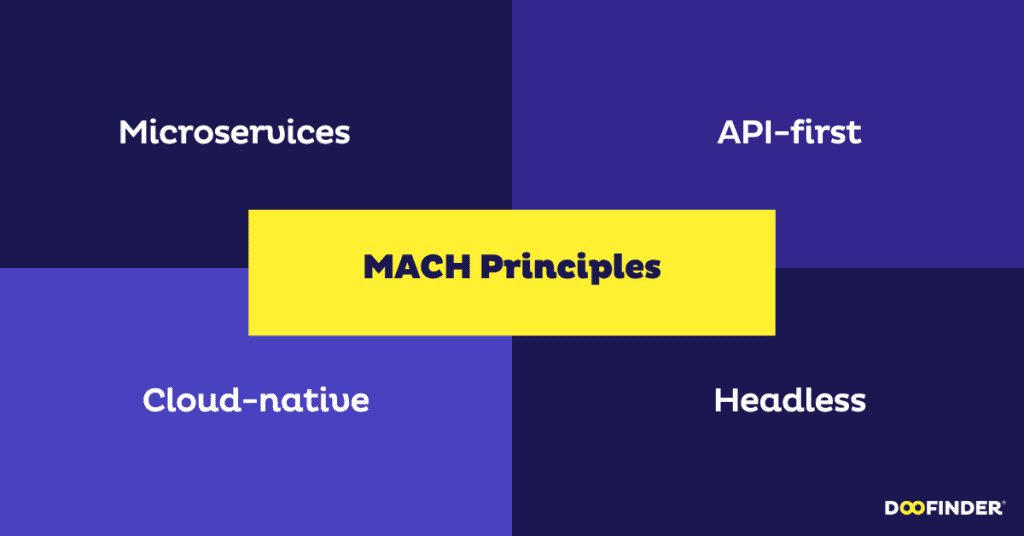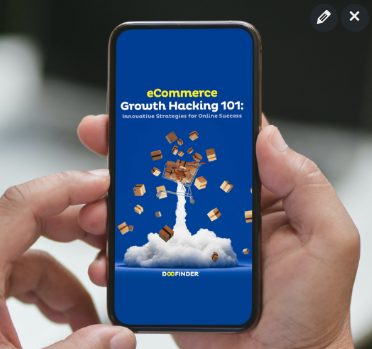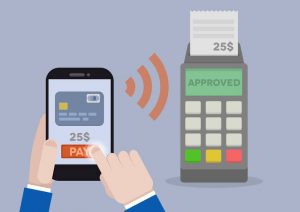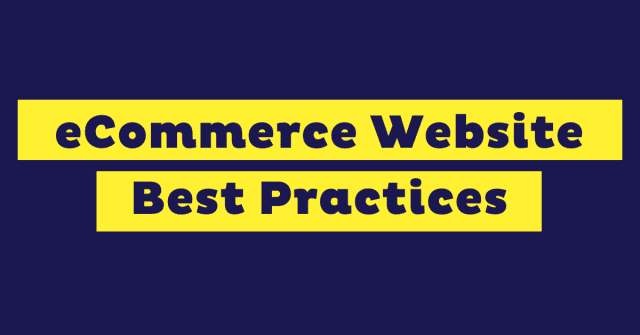Composable commerce is a modern approach to eCommerce that lets you build your platform using the best individual tools for each part of your store, rather than relying on a single, all-in-one solution. By combining modular, best-of-breed capabilities like search, checkout, and payments via APIs, you can create a highly flexible and scalable system that adapts to your business needs.
In this article, we’ll explain what composable commerce is, how it works, and the key benefits it offers.
What “Composable” Actually Means (in plain English)
So, what exactly does “composable” mean in the world of eCommerce? Simply put, it’s about building your store with the best tools available—rather than being locked into one platform. Instead of having a one-size-fits-all solution, composable commerce allows you to choose individual, best-of-breed Pre-Built Capabilities.
This could be search, checkout, or payments. These are modular solutions that can be swapped in and out, so you’re always using the best tool for each part of your store. It makes eCommerce management a lot simpler.
This is different from headless commerce, where the front-end and back-end are decoupled. With composable, it’s even more flexible. You’re choosing the specific capabilities you need, rather than just changing how the front end works. It’s like building a custom Lego set, instead of buying a pre-made model that doesn’t quite fit your needs.
Composable commerce is built on the MACH principles: Microservices, API-first, Cloud-native, and Headless. These principles allow businesses to select the best components for their needs and scale effortlessly, without the constraints of outdated legacy systems.


How Composable Commerce Works
At the core of composable commerce is the idea of APIs—basically, the connectors that allow different systems to talk to each other. When you implement composable commerce, you’re pulling together a bunch of best-of-breed capabilities via these APIs. Whether it’s search, payments, inventory management, or order fulfillment, each service communicates seamlessly with others, but they’re all modular and independent.
Example: Doofinder’s search solution can be plugged into any eCommerce platform through a simple API integration, giving you a powerful search experience without having to replatform your entire store. As your needs evolve, you can swap out one component for another without disrupting the whole system. This modular approach is built on the MACH principles, which ensure that each component is flexible, scalable, and adaptable to your business.
The Key Benefits of Composable Commerce (ordered by business impact)
Now that you understand the basics of composable commerce, let’s take a closer look at the real benefits it offers, prioritized by the impact they can have on your business.
1. Faster Test-and-Learn Cycles → Quicker Feature Launches
With composable commerce, you don’t have to wait for months to release a new feature. You can add or update a single capability (like search, for example) without touching the rest of your stack. This flexibility means you can test and iterate faster, getting new features to market quickly and with minimal risk.
2. Experience Differentiation Across Channels
Composable commerce lets you tailor each part of your customer experience. You can pick the best tools for search, recommendations, checkout, and more—each one optimized for different touchpoints. Want to deliver a personalized shopping experience on mobile? Or optimize for voice search? With composable, you can mix and match the tools that work best for your customers.
3. Risk & Vendor-Lock-In Reduction
One of the best things about composable commerce is the freedom it gives you. If one part of your system underperforms, you can replace it with something better, without having to overhaul your entire platform. No more vendor lock-in or dealing with the frustration of being tied to a single provider that doesn’t meet your needs anymore.
4. Performance & Scalability at the Capability Level
Composable commerce lets you scale each capability (like search, checkout, etc.) independently. So when there’s a surge in traffic or demand for a particular service (say, during a big sale), you can scale that capability without worrying about other parts of your system. This targeted scaling ensures your store stays fast and responsive, even during peak times.
5. Cost Control Over Time (With a TCO Caveat)
While composable commerce gives you flexibility, it’s also more cost-effective in the long run. You can optimize spend by only investing in the capabilities that truly impact your bottom line. However, it’s important to remember that integration costs and operational expenses can add up, so it’s key to monitor your total cost of ownership (TCO) over time. In short, composable commerce can save you money, but you’ll want to plan for those hidden costs, like integrations and monitoring.
6. Scalability
With composable commerce, businesses can scale individual components independently based on demand, ensuring that the system remains responsive and efficient during peak times.
7. Reduced Vendor Lock-In
Composable commerce reduces dependency on a single vendor, providing the flexibility to choose and change components as needed without being tied to a single provider.
8. Future-Proofing
By adopting a composable approach, businesses can integrate emerging technologies and adapt to future trends without significant disruptions, ensuring long-term viability. Supporting Data: The Digital Commerce Landscape Report emphasizes that composable commerce enables businesses to stay ahead of technological advancements, ensuring they remain competitive in the evolving digital landscape.
Why Start Composable with Search & Discovery
When it comes to jumping into composable commerce, search should be your first priority—and here’s why:
The numbers don’t lie:
- Searchers account for around 25% of your site’s traffic but drive 40% (or more) of your revenue. Visitors who engage with search are also 2.3 times more likely to add to cart and convert at higher rates than those who don’t.
- Industry benchmarks show that visitors who use search convert 2 to 3 times higher than the average shopper. This demonstrates that search isn’t just a feature; it’s a significant revenue driver for any eCommerce business.
What’s even better is that search is one of the lowest-friction capabilities to implement when it comes to composable commerce. It can be easily integrated via a JS layer or API without any risk to your core systems like checkout or order management (OMS). This makes it an ideal starting point to test the waters with composable commerce, allowing you to get started quickly with minimal disruption.
Take Doofinder, for example. Our search solution integrates seamlessly into any platform, from Shopify to custom-built sites, with fast installation and easy API and platform integrations. This means you can implement advanced search features like semantic search, AI-powered recommendations, and typo tolerance—all designed to enhance product discovery and improve user experience.
And it’s not just about basic search; by using Doofinder’s merchandising rules and personalized AI recommendations, you can significantly boost Average Order Value (AOV). Customers will be able to find products they actually want to buy faster, which naturally leads to more purchases.

Build Your Composable Roadmap (Beyond Search)
Once you’ve nailed down search and discovery, it’s time to think about what’s next on your composable journey. The beauty of composable commerce is that it’s modular, which means you get to build out your stack gradually, focusing on the areas that will have the most impact on your business.
Here’s a simple roadmap to guide you as you continue building your composable stack, from search to the full eCommerce experience:
1. Search & Discovery (The Foundation)
As we’ve already discussed, starting with search is one of the best ways to kick off your composable journey. It’s a low-risk and high-impact area to tackle first, giving you quick wins in the form of improved conversion rates (CVR) and average order value (AOV). But once your search is humming along, it’s time to move on.
2. Personalization & Recommendations
Now that you have a powerful search engine in place, the next step is to enhance your customers’ experiences with personalization. Personalization isn’t just about showing random product recommendations; it’s about tailoring the experience to each user based on their browsing habits, purchase history, and even what’s trending.
Think about product carousels, “you might also like” sections, or personalized search results—all things that can increase AOV and engagement. By focusing on this after search, you’re building on what you’ve already optimized to keep driving those all-important revenue numbers.
3. Content Management System (CMS) & Customer Data Platform (CDP)
Once you’ve personalized the experience, it’s time to focus on content management and customer data. A solid CMS gives you the ability to easily update content across your site—whether that’s product descriptions, landing pages, or blog posts—without needing a developer to make changes.
A CDP, on the other hand, helps you gather, unify, and analyze customer data. With a centralized view of your customers, you can fine-tune your personalization even more and segment your audience based on key behaviors. It’s about getting the right message to the right person at the right time.
4. Payments
Now that your customer experience is optimized with great search, recommendations, and content, the next logical step is to improve your payment system. With composable commerce, you have the flexibility to choose the payment gateway that best fits your needs—whether that’s integrating with an existing provider or experimenting with new payment methods like buy now, pay later (BNPL) options.
The benefit here is clear: a seamless and flexible payment process reduces cart abandonment and increases conversions. Plus, by swapping out or adding payment methods, you can tailor your approach to different customer needs across regions or even based on device.
5. Order Management System (OMS) & Inventory
The next component to build out is your order management and inventory system. As your store grows, handling orders efficiently becomes crucial. An OMS helps you streamline order processing, manage returns, and provide real-time updates to your customers about shipping and delivery. This ensures a smoother, more reliable experience from checkout to delivery.
Similarly, a solid inventory management system keeps your stock levels accurate and helps prevent overselling. This is vital for keeping customers happy and maintaining profitability. With composable commerce, you can pick the best OMS and inventory management tools for your business needs without worrying about compatibility issues with other systems.
6. Loyalty Programs & Marketing Automation
Once the core systems are in place, you can start layering on tools for customer retention and marketing automation. A loyalty program can reward repeat customers, while automated marketing ensures you’re reaching out with the right messages at the right time—whether that’s via email, push notifications, or SMS.
These systems allow you to scale your customer retention efforts without adding extra headcount or complexity to your operation. It’s about using the power of automation to keep your customers engaged and returning for more.
Frequently Asked Questions
Composable commerce allows you to assemble the best individual tools for each part of your eCommerce experience (like search, checkout, and payments) and integrate them seamlessly through APIs.
This gives you ultimate flexibility to pick and swap capabilities. In contrast, headless commerce focuses on decoupling the front-end from the back-end, offering flexibility in content delivery, but still often tied to a single system. Composable takes it a step further, enabling businesses to select and replace specific tools for every part of their commerce stack.
PBCs are modular, standalone components that manage specific functions like search, checkout, or payments. Easily integrated via APIs, PBCs offer flexibility and scalability—if one component isn’t performing, you can swap it out without disrupting your system. Examples include a search engine like Doofinder or a payment gateway like Stripe.
Composable commerce is ideal for SMBs, especially if you start small with a single PBC like search. Implementing high-impact components can quickly boost conversion rates and AOV without a full platform overhaul. As your business scales, you can add more capabilities based on growth, allowing for a modular and flexible expansion.
When estimating TCO, look beyond initial tool licenses. Consider integration costs, including the time and resources needed to connect systems, as well as ongoing monitoring and maintenance. Factor in scalability costs and third-party integrations. Over time, ongoing operational costs for performance monitoring and maintenance can also impact TCO, so track all related expenses.
Composable commerce adoption continues to rise as businesses seek scalable, flexible tech stacks. According to eMarketer, many companies are moving towards composable architectures, and MACH (Microservices, API-first, Cloud-native, Headless) adoption is increasing.
Valtech’s MACH ROI report shows that companies using composable solutions experience faster time-to-market, better customer experiences, and improved operational efficiency. As the market matures, more businesses recognize the benefits of composable, modular commerce solutions.








